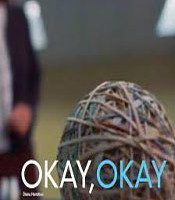More so than the flatulence, bad breath, excessive coughing or hiccupping, drooling, heavy breathing or even vomiting, crying is a physical act that, in a school or office setting, worries and vexes us. Except for crying, all of the aforementioned activities can be readily, often succinctly, summed up—“I had Indian food for lunch—sorry!;” “My heartburn’s back!;” “Last night was my best friend’s bachelor party. And that is why I am dying.” Although we might vehemently hate such officemates in the moment, we rarely worry about their physical or emotional wellbeing. They ate some spicy food, they have a relatively benign physical ailment, they had a late night and are paying for it now. Crying, on the other hand, especially sustained crying, over the course of days or months, worries people. It discomforts them in a way few other things can, and for good reason. Setting aside allergic reactions and the like, to cry implies that, simply put, someone is not well, at least not well in a manner that we are socially—i.e. vomiting after a night of heavy drinking—conditioned to accept. They’re unsettling, those perpetual criers. We all have pains and stigmas and problems and crises and neuroses and insecurities and deficiencies and maladies—so why are you crying about it? And why right now, right here in front of me?
Such is the central conceit and impetus of Diana Hamilton’s Okay, Okay—what it means to cry, how and why we do it and if such an action warrants the cultural and societal implications it often seems to. Hamilton’s source language and scenarios largely come from various news articles, sociological reports and physiological questionnaires, (Jordan Davis touches on a few of them of in his Constant Critic review of the book here) but her poetry—almost all of which is in rendered in prose, almost all of which is one-dimensional in the best possible sense of that word—forces Okay, Okay’s reader to examine and reexamine what is surely one of the most primal, instinctive of mammalian acts. Even if its language is largely borrowed from elsewhere, the rhetoric of a poem that begins with the
sentences:
Describe a cry with utter abandon. Describe as fully as you can how it grew. Describe such a fit of crying, composite photograph. If so, describe a typical case. Describe each symptom of a “good cry” in order. Describe lump in the throat and its repression. Describe vocalization of the cry in old and young, individual cases. Describe its frequency and culmination
is one that simultaneously inspires mild curiosity—how do you, accurately at least, describe someone crying?—and mild revulsion, especially when said poem continues in the same static, zombified, emotionless manner for seven more sentences:
Describe as a persistent symptom a condition that appears temporarily in the preliminary stage of the cry, and more or less throughout its course, namely, a helpless state or a feeling of incapacity.
Later in the collection one of Hamilton’s varied speakers makes the point that:
Sometimes it’s very hard to separate the work mode from the personal mode and the feeling mode. And sometimes you do get to the point, we’ve all been there, we’ve all done that walk of shame past our coworkers, from the boss’ office to the bathroom. You know, it happens, we cry, we go to the bathroom, we clean ourselves up, we drink a glass of water, um, definitely try to cool down the body, in order to stop the crying. Work is about facts, it’s not about feelings.
“Work is about facts, it’s not about feelings.” Put that way, the social repulsion of watching someone bawl uncontrollably at work or school makes a lot sense. No one likes a crier, of course. (Another poem in Okay, Okay lists all the places crying is forbidden or frowned upon: “There’s no crying in figure skating. There’s no crying in Spanish. There’s no crying in mascara. There’s no crying in computer science,” etc., etc.) But in another context—in a “feeling mode” type one perhaps—crying might not only be welcomed, but encouraged. Austere solemnity at a grief-therapy meeting would probably not be culturally repressed, per se, in the same way crying day after day in your cubicle is, but having such a stoic disposition at that type of meeting would probably leave you in the emotional minority. There’s a time to grieve and lament; there’s a time to stick your chin up, stand strong. Choosing which time is which, however, is one that is largely left up to our societal surroundings—work mode vs. personal mode vs. feeling mode, day in, day out.
Okay, Okay posits no grand theories about the nature of crying, no clear cut notions regarding how to stop crying or even why one does it in the first place. Conceptual in nature, culled from a collage of print and internet based sources, some current, some not, Hamilton’s book simply makes you think about crying, page after page, poem after poem. At one point or another everyone has done it, yet the act of crying is nevertheless still somehow viewed (especially at work or school) as disgraceful, unbecoming, lowly. Okay, Okay—the title of the collection itself asks for a certain reprieve—simply wants you to ponder that. Answers or solutions to the “problem” might not be apparent or forthcoming. And that’s the idea:
There was no reason and I felt good because of it. It was in front of a woman, not absolutely true, but my family was going to suffer badly from the loss…Or it was because of physical pain, after sex, from relief…Maybe it was for my country. Regardless, I did cry myself to sleep
Humans, as a rule, cry for infinitesimal reasons. You could be 80 or 8, at home or on the subway, school or work—cry baby cry cry baby cry cry baby cry cry cry.




